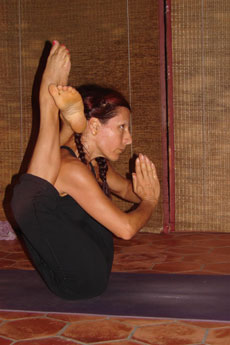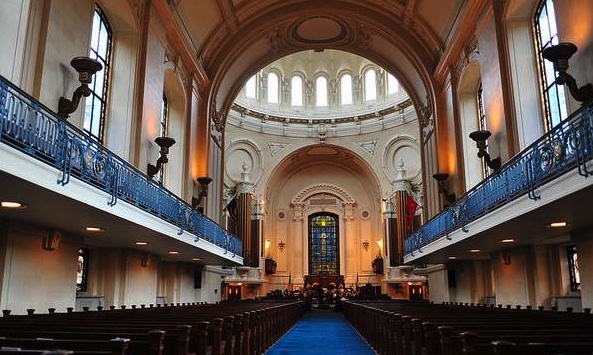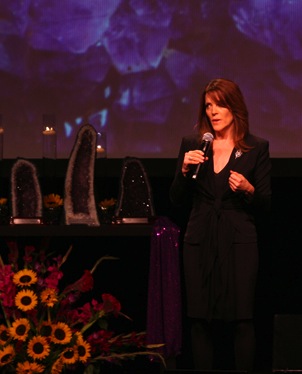Last updated on: October 30, 2012 at 10:46 am
By
tmatt
When I saw this story come in (clicking on a URL from a reader), I immediately thought, “Here we go again.”
But the reader was right. This is not another story that simply assumes that yoga is a practice that can be stripped of all specific religious content. That’s the kind of story that, alas, comes up pretty frequently in the mainstream press. Surf around in this GetReligion search file and you’ll see evidence of that syndrome that pretty quick.
Once again, the goal is not for journalists to assume that all critics of yoga know what they are talking about, when covering a story in which yoga is introduced into taxpayer-funded environments in which other forms of spiritual discipline would not be acceptable. In short, the goal is to try to cover the church-state separation — or yoga-state separation — issues as they are seen by activists on both sides of the story. Let me state the obvious: The goal is to take the conflict seriously, instead of wishing it away.
So here is the set-up for this ABC News story on the West Coast (naturally):
Parents in a southern California community are considering legal action over the constitutionality of a form of yoga being taught to their children, which they claim is introducing religion into public schools.
Last month, half of the students attending classes in the Encinitas Union School District K-6 elementary schools in San Diego North County began taking Ashtanga (Sanskrit for “eight-limbed”) yoga for 30 minutes twice per week. In January, the other half will begin the lessons. Concerned parents have now retained constitutional first amendment attorney Dean Broyles, who says that Ashtanga yoga is a religious form of yoga, and that religious aspects have been introduced into the schools.
“The poses and positions are acknowledged by Ashtanga and Hindi yoga as forms of worship and prayers to Hindu deities,” he told ABC News. “They have a spiritual and religious meaning behind them.”
Now, it helps to know where the money is coming from this. The story gives readers that information very early, which is normal journalistic practice.
You know. When in doubt, follow the money.
The yoga, which is being taught in all nine of the schools in the district, is being funded by a $533,000 grant from the Jois Foundation, a nonprofit that promotes Ashtanga yoga across the world. All of the instructors teaching the students are certified and trained by the Jois Foundation in Ashtanga yoga.
Broyles points to hedge-fund billionaire Paul Tudor Jones and his wife Sonia Jones, who is a known dedicated disciple of Sri Pattabhi Jois, the recently deceased master of Ashtanga yoga, as the money behind the EUSD yoga program. The district’s program will be studied by the University of Virginia and University of San Diego to look at benefits of Ashtanga yoga, as outlined in a letter sent to parents by EUSD Superintendent Tim Baird.
“The study will look at the way that public school systems can impact student learning, health, positive relationships, and overall wellness through the implementation of a holistic approach to student wellness,” Baird said in the letter.
Calls placed by ABC News to Superintendent Baird were not immediately returned.
Calls not returned? That is not a surprise. Try to imagine if a wealthy Catholic funded a program that used, oh, prayer beads to teach a tweaked form of spirituality that evoked specific Catholic doctrines, by name. This ABC News story actually quotes a critic asking if the school would accept money from wealthy Pentecostal Christians to do similar work in the same classrooms.
This is where the story struggles to get voices on the other side into the debate, because the leaders on the other side do not want to answer questions at this time.
This often happens to journalists, when covering controversial stories? When in doubt, you try to quote fact claims that can — with some effort — be verified. In other words, try to avoid opinion and get the basics down. Thus, in this case, readers are told, via Broyles the lawyer:
Broyles says that it has been argued that the in-school yoga programs have been stripped of their spirituality. But he says that kids in EUSD are being exposed to Hindu thought and belief within the school.
“On the wall there was a poster that showed the Ashtanga, or 8-limbed deity. There are words showing what the limbs are,” he said. “The ultimate goal is to be absorbed into the universe, which is called Samadhi. They had a poster depicting that. Fundamentally it is a Hindu religion being taught through Ashtanga yoga.”
Children are also being taught eastern meditation techniques to calm themselves, where one clears the mind of all thoughts, poses that were imparted by Hindu deities, and in one class were trained in drawing mandalas, according to Broyles.
Parents also raised specific concerns about the program aside from the religious aspects, saying that the fact that kids are taking 60 minutes of the 100 mins per week allotted for physical education to do yoga is inappropriate. Broyles said that for 40 minutes per week the kids are not getting PE, and that they’re not offering anything for kids that are opting out of the program.
Did ABC News personnel attempt to verify this information — by which I mean the information that could be confirmed by sight — at the schools? Did the schools refuse admission to a camera crew? That would be good, basic information to know.
The story leaves us with half of the equation on the record. However, it’s clear that a conflict is taking place and that it involves practices that, in a Christian context, would be unacceptable in public schools. The conflict is taken seriously. At this point, that is enough. Now, ABC News has to get the other side on the record.














